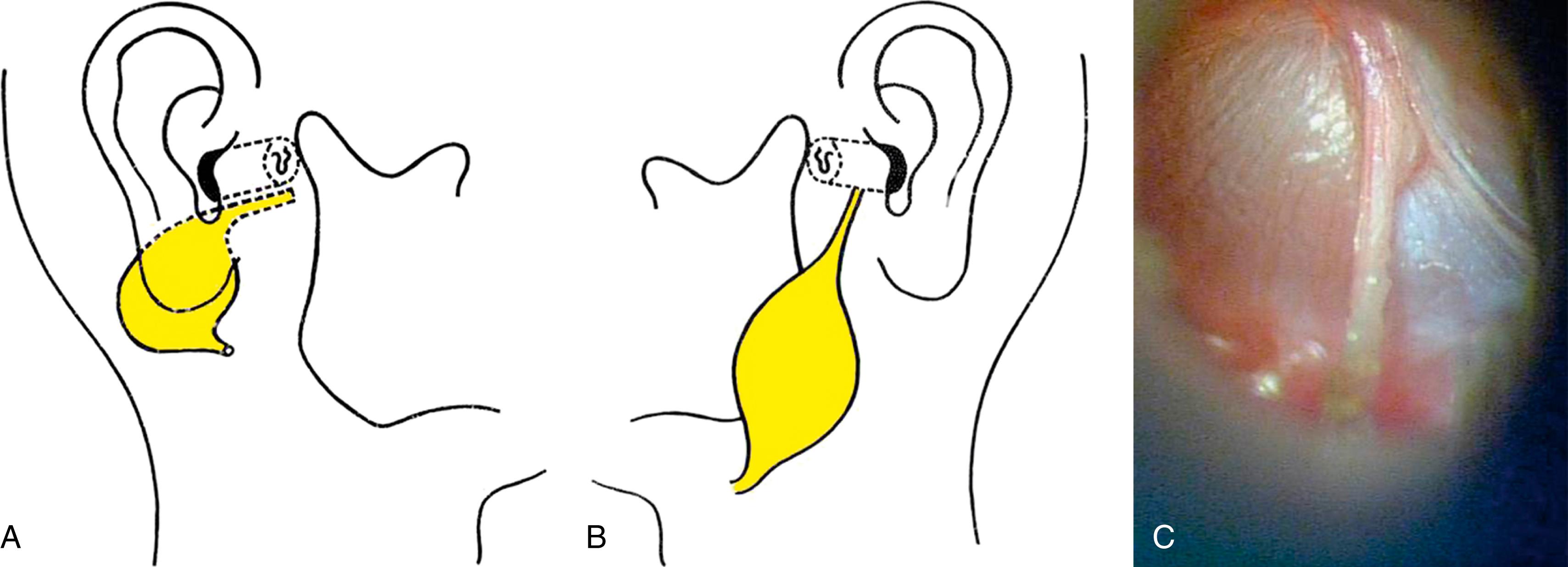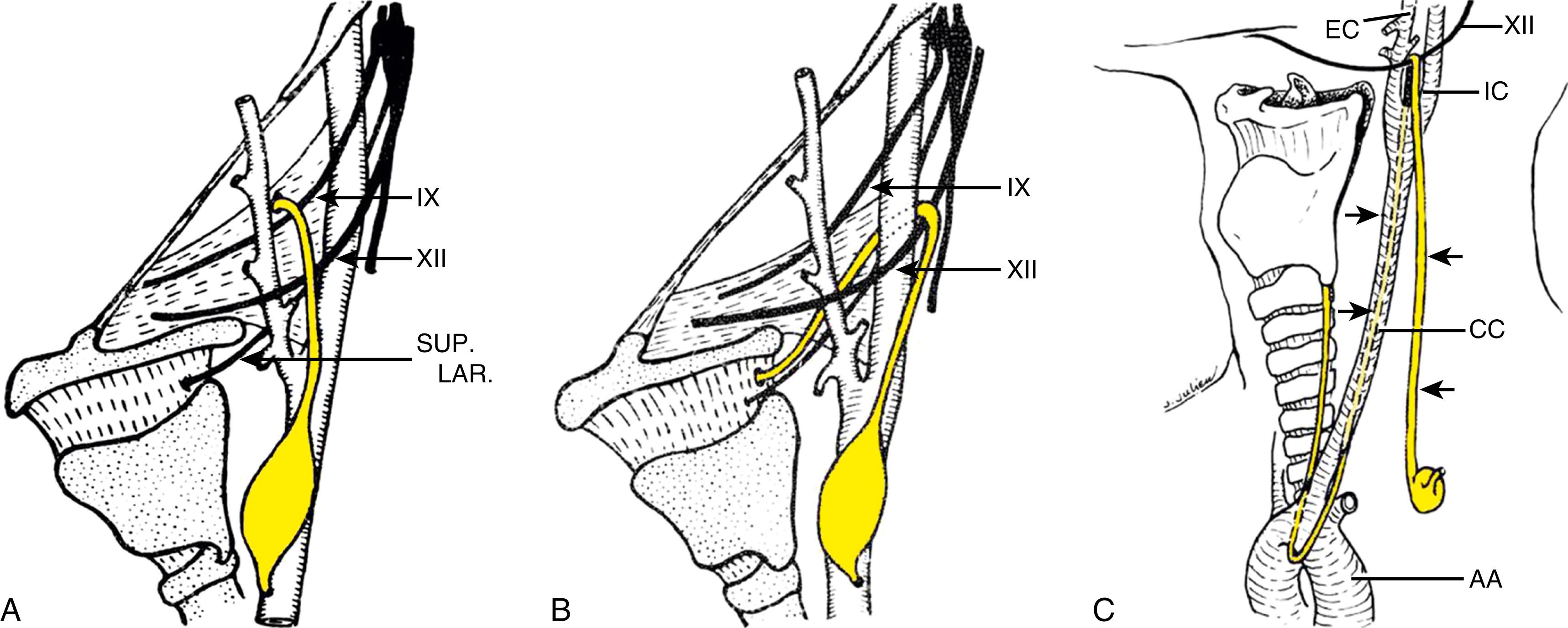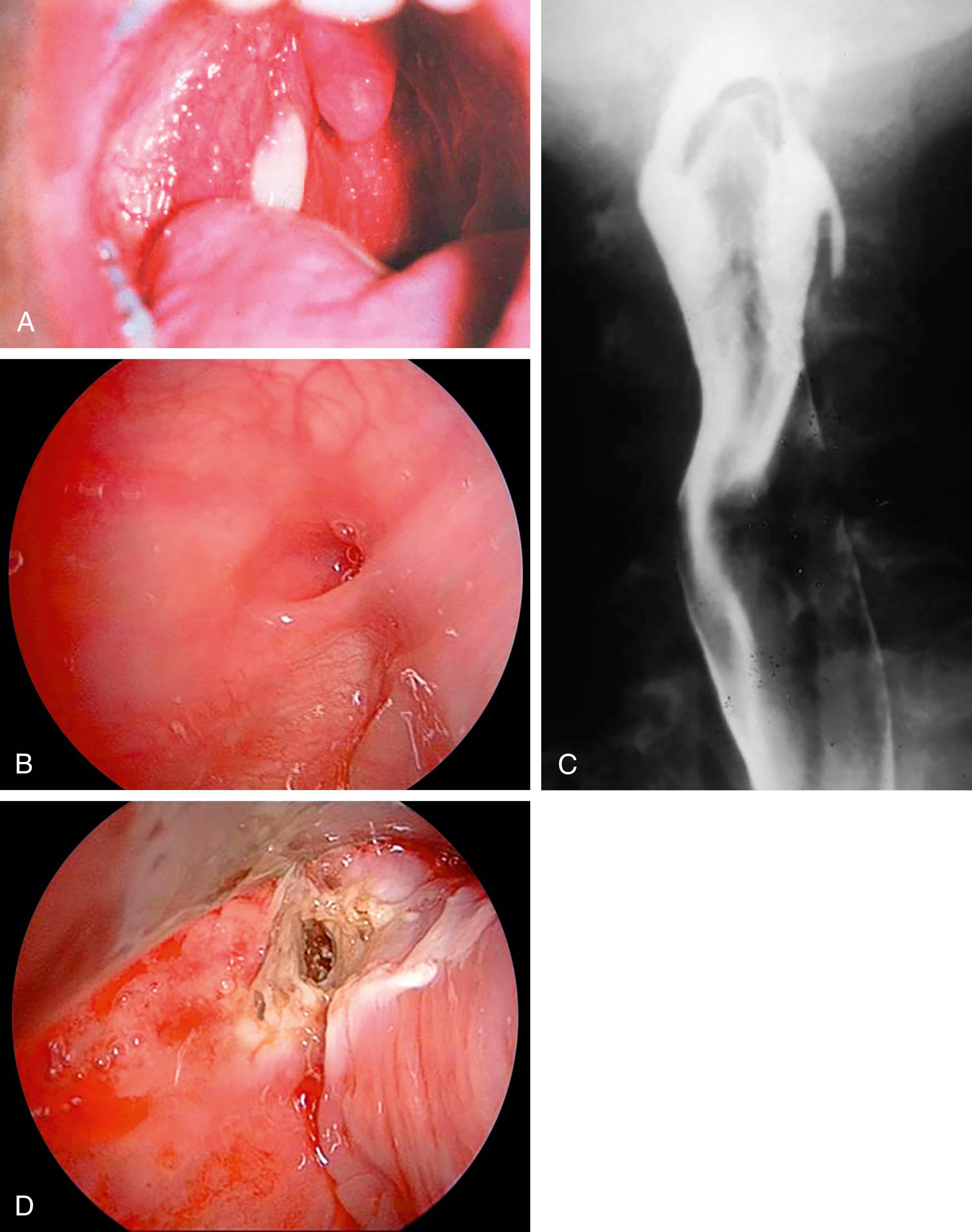Physical Address
304 North Cardinal St.
Dorchester Center, MA 02124
Anomalies of branchial derivation should always be considered in the differential diagnosis of a mass in the neck, particularly in children but also in adults. Such anomalies are second only to thyroglossal duct cysts as the most common masses of congenital origin and are the most common congenital masses presenting in the lateral neck. Depending on the branchial cleft or pouch of origin, these anomalies can manifest anywhere from the auricular region to the supraclavicular fossa. They are most commonly located in the anterior neck, lateral to the midline and medial to the sternocleidomastoid (SCM) muscle. A branchial anomaly can present as a cyst, sinus, or fistula. The differential diagnosis of branchial cysts includes dermoid cysts and lymphatic vascular malformations. Infected branchial cysts can mimic suppurative cervical lymphadenitis. Cystic malignant metastases must be ruled out in adults. The physical presence of a cutaneous sinus or fistula tract strengthens this diagnosis.
The surgical management of these anomalies varies depending on the cleft or pouch of origin and whether the anomaly is a cyst, sinus, or fistula. A detailed knowledge of the embryology of these lesions is therefore necessary for both definitive diagnosis and proper therapeutic intervention.
A branchial anomaly may present as a cyst, sinus tract, or fistula tract.
The anatomic location of the cyst, sinus, or fistula reflects the branchial system of origin.
A variety of imaging studies—ultrasonography, computed tomography (CT), magnetic resonance imaging (MRI), and contrast swallow studies—can enhance diagnostic accuracy and surgical management.
In adults, the possibility of a malignant metastasis with cystic degeneration should be ruled out before an anterolateral neck cyst is excised.
Incision and drainage of infected branchial cysts should be avoided if possible; needle aspiration is preferred to avoid disrupting the cyst.
Complete surgical excision is the definitive therapy for most branchial anomalies.
Operative direct laryngoscopy should be performed prior to the excision of an inferior anterolateral neck mass of suspected third or fourth branchial origin to rule out the possibility of an internal sinus tract communicating with the pyriform sinus.
The risk of postoperative recurrence of all branchial anomalies increases if there has been previous infection or unsuccessful surgical intervention.
The proper surgical management of branchial anomalies requires detailed knowledge of the embryology and anatomy associated with this system.
Many of the symmetrically paired structures of the head and neck arise from the branchial system, which appears during the fourth to seventh weeks of fetal development as six ridges on the superolateral surface of the head. These ridges are known as branchial arches owing to their resemblance to the gill arches of fish. Each arch represents a condensation of mesoderm, from which cartilage, muscle, and bone will form. The arches are separated from one another by an external cleft of ectodermal origin and an internal pouch of endodermal origin. As fetal maturation proceeds, most of the external clefts and internal pouches resorb and the arches fuse. Anomalies of the branchial system can form from any aberration in this process including failure of the external clefts and internal pouches to recede. Anomalies of the branchial system present in any of three distinct forms: sinus tracts, fistula tracts, and cysts. A sinus tract opens into either the pharynx or the skin and ends blindly in the neck; it is representative of a vestigial pouch or cleft. A fistula tract has both cutaneous and pharyngeal communications and is thought to arise from a persistence of both cleft and pouch with dissolution of the dividing plate. A branchial cyst is essentially a residual pouch or cleft with no external or internal communication. The anatomic location of the cyst, sinus, or fistula reflects the branchial system of origin, designated by the superior of the two arches (first, second, third, or fourth) separated by the cleft and pouch ( Fig. 201.1 ).

Branchial anomalies most commonly arise from the second (65% to 90%) and first (8% to 25%) branchial systems; anomalies of the third and fourth systems are comparatively rare. Third and fourth branchial anomalies have a left-sided predominance; second branchial anomalies tend to occur more often on the right. Although these lesions can manifest at any age, the average age of presentation is less than 5 years, and no gender predilection is apparent. Branchial cleft anomalies with cutaneous sinus or fistula tracts are typically apparent at birth; cysts and branchial pouch anomalies with pharyngeal communications tend to present later in life. Within the adult population, the mean age of diagnosis of branchial cysts has been reported as 40 years, with a slight female predominance.
First branchial cleft anomalies are often divided into two subgroups or types. The historic Work classification system is based on histopathology. Work type I anomalies consist of only ectodermal (squamous epithelium) elements representative of exclusively cleft remnants. Work type II anomalies consist of both ectodermal (squamous epithelium) and mesodermal (cartilage) elements reflective of both cleft and arch remnants.
Subsequent anatomic classifications have greater surgical relevance. Type I anatomic anomalies manifest as a sinus tract and/or cyst ( Fig. 201.2A ). If there is a cutaneous opening, it is located anterior, inferior, or (rarely) posterior to the auricle above the level of the mandible. The sinus tract or cyst in type I anomalies is superficial to the parotid gland and facial nerve; the tract typically parallels but does not communicate with the external auditory canal, ending blindly.

A type II anatomic anomaly may present as a sinus tract, fistula tract, or cyst (see Fig. 201.2B ). The cutaneous cervicofacial opening, if present, is typically at or below the angle of the mandible and always superior to the level of the hyoid. The course of the sinus or fistula tract or location of the cyst is highly variable with respect to the parotid gland and facial nerve. Tracts may be superficial or deep to the main branches of the facial nerve and may even course between specific branches. Type II fistula tracts of the first branchial cleft communicate directly with the ipsilateral external ear canal and may even extend to the tympanic membrane (see Fig. 201.2C ).
A second branchial anomaly may present as a cyst, sinus tract, or fistula tract. Isolated branchial cysts most commonly originate from the second branchial system. On histopathologic examination, lymphoid tissue is characteristically found within the cyst walls. The external opening of a second branchial cleft remnant, if present, is typically found at the anterior border of the SCM muscle, always inferior to the level of the hyoid bone and superior to the level of the cricothyroid cartilages. The course of a complete second branchial fistula tract would run superior and lateral to both the glossopharyngeal and hypoglossal nerves and then between the internal and external carotid arteries, opening internally into the ipsilateral tonsillar fossa ( Fig. 201.3A ).

Anomalies of the third branchial system are most often sinus tracts or cysts; the occurrence of a true fistula is very rare. The pharyngeal opening of a third branchial pouch remnant, is within the base of the ipsilateral pyriform sinus. An internal sinus tract runs transversely from the thyrohyoid membrane into the neck, then traveling inferior and posterior to the glossopharyngeal nerve and superior to the hypoglossal nerve and finally coursing posterior to the internal carotid artery. The cutaneous opening of a third branchial cleft remnant is typically in the anteroinferior neck at the anterior border of the SCM (see Fig. 201.3B ). A third branchial cyst may occur anywhere along this theoretical course. Because of the pharyngeal pouch component of a third branchial anomaly, thymic tissue may be present within the cyst walls; some consider cysts of the third branchial pouch to be synonymous with thymic (thymopharyngeal) cysts.
Fourth branchial anomalies likewise manifest solely as sinus tracts or cysts. A complete fistula tract would be highly unlikely given its predicted long tortuous course (see Fig. 201.3C ). Similar to third branchial anomalies, the cutaneous opening of a fourth branchial cleft remnant, if present, is in the anteroinferior neck at the anterior border of the SCM. In contrast to third branchial anomalies, the internal opening of a fourth branchial pouch remnant should be at the apex, not base, of the ipsilateral pyriform sinus. An internal sinus tract arising from the apex of the pyriform sinus would pierce the cricothyroid membrane to enter the neck, theoretically coursing inferiorly and deep to the superior laryngeal nerve and superficial to the recurrent laryngeal nerve. This course would bring the tract into close proximity to the superior pole of the ipsilateral thyroid gland.
Given the anatomic course of third and especially fourth branchial anomalies, abscess formation or recurrent infection of the thyroid gland should raise suspicion of a third or more likely fourth branchial pouch remnant. An internal communication to the ipsilateral pyriform sinus must be ruled out in such cases.
Presenting history
When and how did the anomaly first present (cervicofacial cutaneous opening, evident neck mass, or both)?
Has there been any evidence of secondary infection such as fluctuation in size, pain, or erythema of the overlying skin? (This could be due to an internal pharyngeal communication or the activation of lymphoid aggregates in the cyst wall secondary to an upper respiratory tract infection.)
If a cervicofacial cutaneous opening is present, has there been drainage? (This would most likely be due to glandular secretions from the lining of the sinus tract but could also reflect saliva if there were a true fistula with a pharyngeal communication.)
Has there been any evidence of compromise to the aerodigestive tract, such as dysphagia or stridor?
Past medical/surgical history
Confirmed previous infection?
Previous surgical intervention such as needle aspiration or incision and drainage?
Family history
Similar presentation?
Syndromic background?
Bleeding disorders or adverse reactions to general anesthesia (in preparation for surgical excision)?
Medications
Particularly any medications that would complicate anesthesia or increase the risk of hemorrhage
Social history
A history of alcohol and/or tobacco use is of significance in adults owing to the possibility of cystic cervical neoplastic metastases.
Complete examination of the head and neck with a focus on the anatomic location and size of the neck mass as well as the presence of any ipsilateral or bilateral cervicofacial cutaneous openings. A detailed examination of the ear is particularly important if there are any periauricular sinus tract openings.
A flexible endoscopic laryngopharyngeal examination is necessary in adults to look for a primary malignancy; such an examination, unfortunately, would not be an adequate means of establishing the presence or absence of a tract in the pyriform sinus.
Evaluation for other craniofacial and systemic physical examination findings suggestive of an underlying syndrome
Branchio-oto-renal (BOR) syndrome: Hearing loss, preauricular appendages or tags, malformations of the pinna, stenosis/atresia of the external auditory canal, mild to severe renal impairment
Oculo-auriculo-vertebral (Goldenhar, hemifacial microsomia) spectrum: Facial asymmetry, malformations of the pinna and external ear canal, preauricular tags or pits, conductive hearing loss, aplasia or hypoplasia of the mandibular condyle, ophthalmologic abnormalities
DiGeorge syndrome: Complete or partial absence of the thymus gland; micrognathia; small low-set ears; blunting, clefting, or indentation of the nose; hypertelorism; cardiac anomalies; cleft palate; hypocalcemia/hypoparathyroidism
Treacher Collins (mandibulofacial dysostoses) syndrome: Downward-sloping palpebral fissures, depressed cheek bones, malformed pinna, Pierre Robin sequence, malformations of the external and middle ear, short neck
Fine-needle aspiration of a cystic mass in the neck in adults is recommended to rule out the possibility of a cervical metastasis.
Ultrasonography is useful as an initial imaging modality, particularly in children, because it is easily obtained and avoids radiation exposure. The ultrasonographic characteristics of a branchial cyst include uniform low echogenicity and lack of internal septation with no acoustic enhancement. Ultrasound can distinguish solid from cystic masses and facilitate fine-needle aspiration if indicated. Three-dimensional ultrasonography has been used to diagnose large branchial cysts prenatally.
High-resolution CT with contrast is the most widely used imaging modality for a mass in the neck owing to its relative ease of use and clear demarcation of the size, depth, and location with respect to surrounding anatomic structures. A branchial cyst typically appears as a well-defined nonenhancing mass. Sinus and fistula tracts are typically visible on CT only if there is distention of the tract secondary to associated infection or inflammation. If an external cutaneous opening is present, a contrast CT fistulogram may be performed to outline the tract. The main drawback of CT is the associated radiation exposure and potential need for sedation in children.
MRI with gadolinium contrast is an alternative to CT because of the lack of radiation exposure and excellent soft tissue detail. It is especially helpful with respect to lesions in the parotid gland region to help define the relationship of the mass to the facial nerve. A branchial cyst typically is hypointense on T1 imaging, hyperintense on T2 imaging, and does not enhance with gadolinium. Disadvantages include the comparatively high expense, study duration, and frequent need for sedation and possibly general anesthesia in children.
A contrast swallow study may be useful in the evaluation of patients with recurrent neck abscesses or suppurative thyroiditis. Such studies should be performed after the acute inflammation has resolved. An internal tract arising in the pyriform sinus should be sought ( Fig. 201.4C ).

Become a Clinical Tree membership for Full access and enjoy Unlimited articles
If you are a member. Log in here